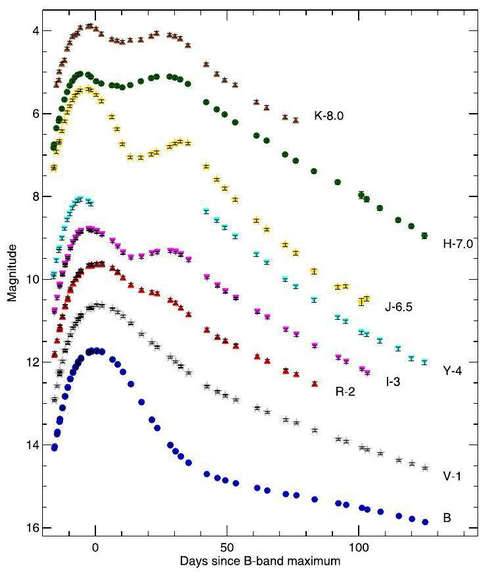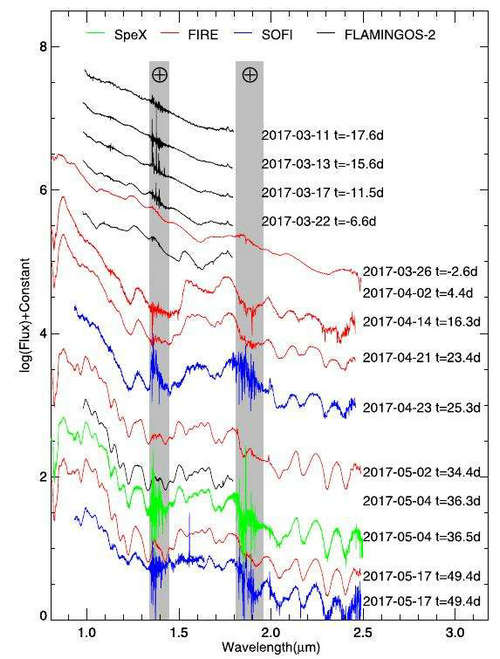Type Ia supernovae have served as cosmological distance indicators which led to the discovery of the accelerating expansion of the Universe. Nevertheless, the nature of their progenitors and explosion mechanisms remain unsolved mysteries.
The latest study on a nearby Type Ia supernova SN 2017cbv exploded in the galaxy NGC 5643, led by Dr. Lingzhi Wang, from Chinese Academy of Sciences South America Center for Astronomy (CAS-SACA)/China-Chile Joint Center for Astronomy (CCJCA), shed lights on its possible progenitor systems and explosion mechanisms.
The international team led by Dr. Lingzhi Wang studied comprehensively the supernova SN2017cbv based on high quality multi-color time-series data from world-class facilities residing in Chile.
Working as a long-term visiting scholar in Chile, Lingzhi Wang has access to various world-class telescopes in Chile and obtained plenty of high-quality data for SN2017cbv timely, soon after the discovery of this important target.
“The data set is unique. It is one of the supernovae with the most complete temporal coverage across the optical and near infrared filter bands and spectroscopy, which makes the target an ideal standard for comparative investigations of SNeIa,” said Lingzhi Wang.
Many world-class facilities were used to acquire the data. This beautiful data includes photometric measurements in BVRIYJHKs bands (from -16 to +125 days relative to B-band maximum), 14 NIR spectra observed with 6.5m Magellan Telescope, 8.2m Gemini South, 3.6m NTT, and 3.0m NASA IRTF, including a rare NIR spectrum which caught at the earliest phase (about 18 days before B-band maximum).
Prof. Nicholas B. Suntzeff, a coauthor and pioneer in the field of supernova research, commented that: “These light curves in this paper will be shown over and over again in talks around the world now, as the best example of Type Ia photometric behavior.”
By comparing optical and NIR color and magnitudes, the authors further concluded that the late-time optical color may not yield reliable estimates of the host’s extinction.
“Reliable estimates of the extinction and reddening caused by the dust in the host galaxies of Type Ia supernovae is the most important issue in the cosmological application of Type Ia supernova which laid the foundation of the studies of the dark energy of the Universe,” said Prof. Lifan Wang, a coauthor of this study.
“With this unique data set, we have been able to set constraints on the nickel mass synthesized during the explosion, construct the SN explosion model that best fit the data, as well as to derive an upper limit of 0.1 solar mass for the mass of hydrogen,” said Lingzhi Wang.
The work was published in The Astrophysical Journal, and can be accessed at https://iopscience.iop.org/article/10.3847/1538-4357/abba82.

Figure 1: BVRIYJHKs-band light curves of SN2017cbv. (Credit: Lingzhi Wang, CASSACA)

Figure 2: NIR spectroscopic evolution of SN 2017cbv. (Credit: Lingzhi Wang, CASSACA)

Address: 20A Datun Road, Chaoyang District, Beijing, China code: 100012
Tel: 010-64888708 E-mail: naoc@nao.cas.cn

